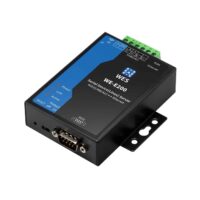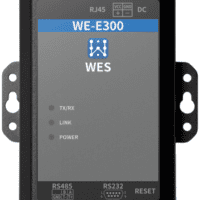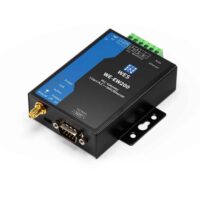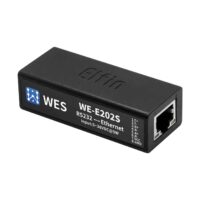summarize
Internet of Things (IoT) is a new application developed due to its dependence on electronic computer technology and communication technology; therefore, there are many communication interfaces designed, ranging from the commonly used serial communication, to various wirelesscommunications interfaceThe RS232 communication protocol is used by theEIA (Electronics Industry Alliance)/TIA (Telecommunications Industry Association)The serial communication protocol was developed in 1962, and is therefore sometimes referred to as EIA232, TIA232. modern hardware designs have utilized newer serial communication protocols such as USB, Ethernet, and Wi-Fi. however, RS232 still proves to be outstanding. The reasons for this are the longer travel distance of RS232 signals compared to I2C and serial TTL signals, better noise immunity, and compatibility between device manufacturers, especially for connecting computers and modems, which has kept RS232 in common use in the industry.
RS232 interface standard
Its full name is "data terminal equipment (DTE) and data communications equipment (DCE) between the serial binary data exchange interface technology standard"; the standard provides for the use of a 25-pin DB-25 connector, the connector of each pin of the signal content to be stipulated, but also on the level of the various signals to be stipulated. Later IBM's PC will be simplified RS232 into a DB-9 connector, thus becoming the de facto standard. The RS-232 port for industrial control generally uses only three lines, RXD, TXD and GND.
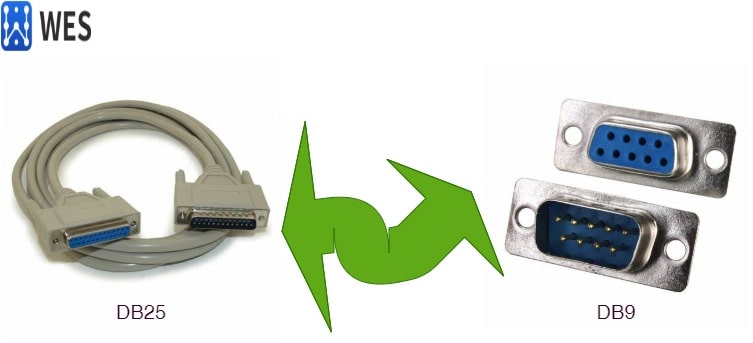
The DTE (computer) transmits the information serially to the device DCE (modem) at the other end. In this case, the DTE sends the binary data "11011101" to the DCE and the DCE sends the binary data "11011010" to the DTE device.

RS232 describes the common voltage levels, electrical standards, modes of operation, and bit counts for transmission from DTE to DCE. The standard is used to transmit information exchanges over telephone lines
RS232 electrical standards
voltage level
Signal voltages use positive logic, with signal voltages between +3V and +25V indicating logic "1" and signal voltages between -3V and -25V indicating logic "0".
The control voltage signals use negative logic, i.e., logic "1" for -3 to -25 V and logic "0" for +3 V to +25 V. The control voltage signals use negative logic.
Voltages from -3V to +3V are considered to be in an indeterminate state
| signal voltage | logical state |
| +3V to +25V | ON(1) |
| -3V to -25V | OFF(-1) |
| Control signal voltage | logical state |
| +3V to +25V | OFF(-1) |
| -3V to -25V | ON(1) |
Line Impedance
Impedance bridging between an RS232 transmitter and receiver is defined to maximize the voltage transfer between the transmitter and receiver. The range is 3KΩ to 7KΩ
operating mode
RS232 devices operate with single-ended signaling (two-wire). This means that one wire carries a varying voltage and the other wire is connected to ground. Single-ended signaling is subject to noise caused by the difference in ground voltages of the driver and receiver circuits. The advantage of single-ended technology is that it requires fewer wires to transmit information
baud
It is the number of binary bits transmitted per second.RS232 supports baud rates from 110 to 230400. Typically, baud rates of 1200, 4800, 9600, 115200 are used. it determines the speed at which data is sent from the transmitter to the receiver (note; the rate at the transmitter and receiver should be the same).
slew rate
The RS232 standard maintains slow rise and fall times with a minimum slew rate (slew rate is a unit of time, typically measured in microseconds, over which the output voltage value of a device can be varied) to minimize crosstalk between adjacent signals. Typically, the maximum allowable slew rate is 30V/µsec.
hardware interface
RS232 uses DB9 and DB25 connectors to determine communication between DTE and DCE. The connectors (DB9, DB25) come with male and female cables.The DB9 connector has 9 pins and the DB25 connector has 25 pins, each with its own function. In fact, in most cases only the three terminals RXD, TXD and GND are used.

Advantages and disadvantages of RS232
RS232 is an older protocol that has advantages that have made it the standard serial interface for system-to-system communications and offers the following benefits. Simple protocol design, less hardware overhead than parallel communications, recommended standard for short-range applications. It is compatible with DTE and DCE communications and is a low-cost protocol for development. However, the disadvantages are also more obvious, it it is a single-ended protocol that does not support full-duplex communication and can change ground potential; the protocol is limited in long distance communication due to longer cable lengths that can introduce crosstalk during serial communication.
Common application areas
RS232 communication its applications are very wide and can be used in different applications. Some of them are:
- Teletypewriter equipment.
- Demodulator Applications.
- PC COM port interface.
- Debugging in embedded systems.
- Modems and printers.
- Handheld devices.
- CNC controllers, software debuggers, etc.
- Barcode scanners and point-of-sale (POS) terminals
World Power related RS-232 products
Content review.






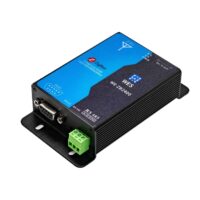 Industrial ZigBeeDTU Radio RS232/485 to ZigBee Wireless Transmission Converter WE-ZB2400
Industrial ZigBeeDTU Radio RS232/485 to ZigBee Wireless Transmission Converter WE-ZB2400 